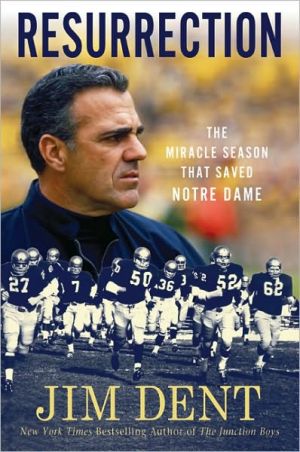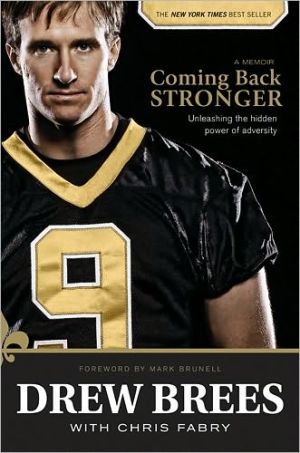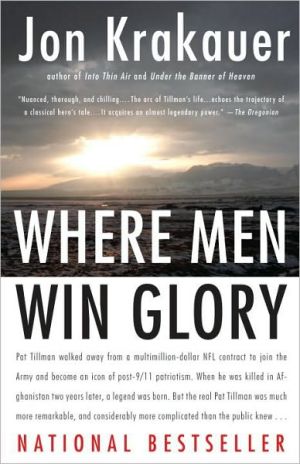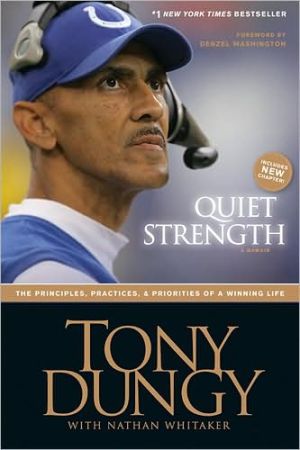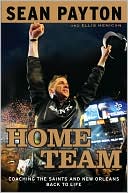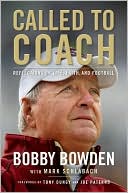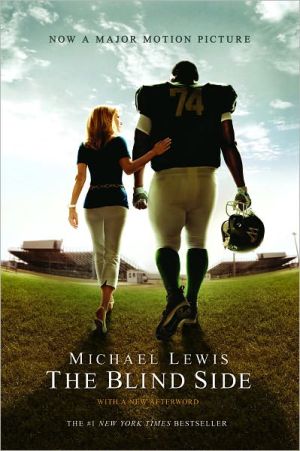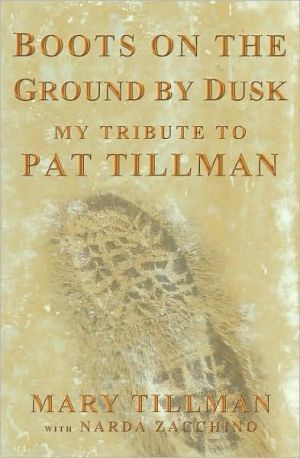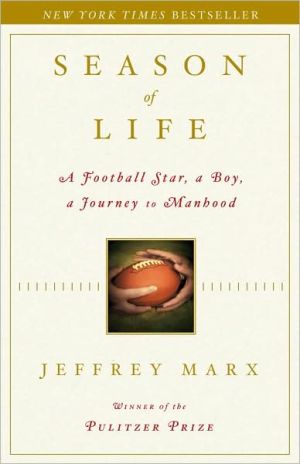Resurrection: The Miracle Season That Saved Notre Dame
Jim Dent, author of the New York Times bestselling The Junction Boys returns with the remarkable and inspiring story of one of the biggest comebacks in college football history.\ In the 1960’s, Notre Dame’s football program was in shambles. Little did anyone know, help was on its way in the form of Ara Parseghian, a controversial choice for head coach—the first one outside of the Notre Dame “family.” It was now his responsibility to rebuild the once-proud program and teach the Fighting Irish...
Search in google:
Jim Dent, author of the New York Times bestselling The Junction Boys returns with the remarkable and inspiring story of one of the biggest comebacks in college football history.Back in the 1960s, Notre Dame’s football program was in shambles. For five straight years, from 1958 through 1963, the home of Knute Rockne and Frank Leahy could not produce one winning season. Plagued by a series of bad coaching choices, inept management, and a loss of institutional support, no one could be sure if the Fighting Irish would ever return to glory. When “Touchdown Jesus” was erected in 1964, it presided over a team so hopeless that the entire football program was on the brink of collapse.Little did anyone know, help was on its way in the form of Ara Parseghian, a controversial choice for head coach—-the first one outside of the Notre Dame “family”—-who had only set foot on Notre Dame soil when his football teams played (and won) there. It was now his responsibility to rebuild the once-proud program and teach the Fighting Irish how to win again. This was no small task.The men of Notre Dame football were a bunch of unlikelies and oddballs, but Parseghian transformed them into a team: a senior quarterback who would win the Heisman Trophy two weeks before he picked up his first letter jacket; a five-foot-eight walk-on who would go on to make first team All-American; and an exceptionally rare black player, who would overcome much more than his quiet demeanor to rise to All-American, All-Pro, NFL Hall of Famer, and to justice of the Minnesota Supreme Court.Parseghian would change everything, from the uniforms and pads to the offensive strategy. He switched players from position to position like pieces on a chessboard, and just before the season opener, he hung a motto over the locker-room door:What tho the oddsBe great or smallNotre Dame menWill win over allIt would be a huge gamble against great obstacles, but Ara Parseghian had that look in his eye. . . .New York Times bestselling author Jim Dent chronicles one of the greatest comeback seasons in the history of college football—-the first season in what is known as the “Era of Ara.” Once again confirming his position as one of the top sportswriters in the country, Dent writes with passion, humor, and incredible insight, bringing the legends of Notre Dame football to life in an unforgettable story of second chances, determination, and unwavering spirit. Publishers Weekly Ara Parseghian, Notre Dame's first "outsider" coach-non-Catholic, not a Notre Dame alum-turned around a failing football tradition when he joined the university in 1963. To capture the way it was and communicate the sense of immense anticipation that greeted the young, driven coach, author and journalist Dent (The Junction Boys), an avid fan, researched past programs led by the legendary Knute Rockne and others, a strategy that sets the stage for his nail-biting saga, but makes for a choppy first quarter. Once he settles into the season, Dent does a masterful job recreating games without ever forgetting the human details; for example, Parseghian's fierce integrity drove him to get rid of a remarkably promising player: "I hated to let a player like Dave go...but I could see the players walking a little taller. They knew that we were serious as we could be about turning the team around." Dent's characters take on the dimensions of true and winning people; by the time the where-are-the-now epilogue rolls around, readers will consider them something like old friends. 8 pages color photos. Copyright © Reed Business Information, a division of Reed Elsevier Inc. All rights reserved.
Chapter 1\ TOUGH IRISH KID Snow was blowing sideways on a Chicago morning in December of 1963 when Tony Carey aimed the ’53 Chevy into the parking lot at Marshall Field’s department store. His fingers drummed the steering wheel to the beat of “Louie Louie.” His mind drifted back to Notre Dame and the trouble that had gone down.\ Carey’s mood reflected the low, gray clouds rolling off Lake Michigan. Life should have turned out better. No one ever expected him to get kicked out of Notre Dame, even for one semester, and as a result, his football career almost crashed. In three years in South Bend he had yet to suit up for one game. How could this happen to a tough Irish kid from the south side of Chicago?\ Not long ago, Carey had greatness written all over him. In 1960, he quarterbacked Mount Carmel High to a 28–7 victory over archrival St. George in the Chicago Catholic League championship game, and the Caravan proceeded to win the overall city title by defeating Taft High as Carey won Most Valuable Player honors. He could still feel his cleats digging into the thick grass at Soldier Field; his ears remained filled with the cheering of 80,000 fans. You could fill a dozen scrapbooks with the stories they had written about Tony Carey.\ Once upon a time, Notre Dame had been the passion of his life. The Fighting Irish existed in his genes. His father, Robert, had competed on the Notre Dame track team and graduated with a law degree from the university in 1926. His brother, Tom, had played quarterback for legendary coach Frank Leahy in the early fifties. So how was it possible that this grand old football program had gone straight into the toilet? How in the name of Knute Rockne had an American brand name bigger than General Motors become yesterday’s news? It seemed that no one cared anymore. The nine national championships, the five Heisman Trophies, and the Four Horse men were memories and nothing more. It could be said that the Notre Dame program was suffering through a period of Famine, Pestilence, Destruction, and Death.\ Word from the Chicago newspapers was that Notre Dame would soon depart from the ranks of big-time college football to join Stanford, Northwestern, Army, Navy, Vanderbilt, Rice, and others of a lesser football heritage in a conference certain to inspire mediocrity. Collegiate powers like Michigan State, Iowa, Wisconsin, Purdue, and USC would be crossed off the schedule. It would be a quasi-Ivy League existence instead of an annual chase for number one. Good-bye Frank Leahy. See you later, Johnny Lujack. Forget about those rollicking Saturdays at Yankee Stadium in the twenties, thirties, and forties, when Notre Dame versus Army captured the imagination of an entire nation. Ignore the fact that Rockne and Notre Dame had once salvaged college football’s reputation as a scandal-ridden blood sport. Quash the notion that Notre Dame in the twenties had single-handedly transformed college football from a lowly outsider into an American institution.\ That frosty morning in ’63, Tony Carey, his life going nowhere, shifted the Chevy into neutral and gazed at the gathering storm. Not once had he felt so alone. Never could he remember being on the outside looking in. Giving up was getting closer than hanging on. Oh, he probably would return for spring practice in March, hoping to jump-start his career, but his focus at this time was pursuing his diploma and preparing himself for law school.\ Then it hit him. Why had the music stopped? Carey looked down at the radio now silent in his dashboard. He heard static and then a voice: “We interrupt our regular programming to bring you this news bulletin.”\ Carey would say for decades that he did not remember climbing onto the hood of the ’53 Chevy that day, but in a matter of seconds, he was dancing and yelling. Snow was sticking to his flattop. His high-top, rough-suede hush puppies, a.k.a. Polish gym shoes, were getting soaked. People were watching him. Still, nothing was about to calm that piston inside his heart.\ “We are back! We are back!” he yelled.\ A new coach was coming to Notre Dame. The football program would have a fighting chance. It would be a huge gamble against great odds. But the man they were talking about on the radio had that look in his eye.\ Chapter 2\ BLUEPRINT FOR DEFEAT Given the glorious past of Notre Dame football, it seemed preposterous that a powerful force would set out to tear it all down. Actually, it was the work of two people, and both were insiders.\ The fall of Notre Dame football was set in motion in 1953. The reason was simple: President Rev. Theodore M. Hesburgh hated the term “football factory.” Fair or not, this was how Notre Dame was perceived across America. Father Hesburgh was driven to change the entire scheme and to clean up the image. To him, the sins of the institution had begun under Knute Rockne back in the 1920s. The Roaring Twenties was the decade of excess, and Notre Dame football was the epitome of that overindulgence.\ For years, Father Hesburgh had studied the football program and wondered how it could have gotten so out of control. How could a brutish game come to overshadow an entire university? So at the end of the 1953 season, about a year after he ascended to the office of the presidency, the priest set out to dismantle the factory. Academia would be number one.\ Father Hesburgh, starting in the early 1950s, fought the odds to transform the university into the “Harvard of the Midwest.” If football had to suffer, so be it. His closest friend and leading supporter in this quest was Father Edmund P. Joyce, who recently had been elevated to the title of executive vice president and chairman of the faculty board in charge of athletics. Together, the two men began their crusade. They slashed athletic scholarships and started to rein in the program. First, they had to do something about coach Frank Leahy, a rogue who had built his own fiefdom while bending many rules. Fathers Hesburgh and Joyce could have cared less that Leahy had been college football’s most successful coach over the past two de cades.\ When Fathers Hesburgh and Joyce set out to fix the university’s reputation, they dumped the old Notre Dame thinking that was the foundation for this relentless pursuit of championships. Regardless of the amount of glory it shined upon the university, football was about to take a fall.\ Father Joyce was quick to support this philosophy. “Naturally, we would like to have a winning football team,” he said, “but it is not so important as all that. I can understand the attention that the football team has received, because of the past, but you must remember that Notre Dame is a great academic institution and it has been for many years.”\ Had they forgotten that Notre Dame was nothing more than a remote outpost out on the cold Indiana plains when Rockne took over as coach in 1918? If not for football, Notre Dame would have remained a forgotten sectarian college. When Notre Dame and Army met in the legendary 1913 game at West Point, the Cadets admitted they had never heard of Notre Dame—could not even pronounce it. Army players simply referred to the team as the “Catholics.”\ It was Rockne who spread the Notre Dame fame far and wide in the twenties. Who could forget the visage of Pat O’Brien playing the Rock in the movie Knute Rockne: All American. “Pass that Ball! Run that Ball! Fight! Fight! Fight!”\ Since the beginning of time, it seemed, Notre Dame had been all about the old pigskin. Why else would a campus statue of Father William Corby with his right hand held up be called “Fair Catch Corby?” Why would everyone shout “We’re No. 1!” when they set eyes on the statue of Moses with his forefinger pointing to the sky? Why else would the Sacred Heart Church be the place where students and alumni alike went to seek forgiveness for beating Iowa by only two touchdowns?\ Needless to say, this overhyped notion did not sit well with Father Hesburgh. He was still disturbed over the troubling issues from the 1920s when players were not required to attend classes. Halfback George Gipp might have been the greatest player of this era, but he was a heavy drinker and a gambler who bet on his own team. During a tongue-lashing from Rockne at halftime of the 1919 Army game, Gipp supposedly said, “Ah, don’t worry, Rock. We’ll win in the second half. I’ve got five hundred bucks bet on this game.”\ Gipp had played professionally on Sundays under an assumed name, just as Rockne and others had done during their playing days at Notre Dame.\ In the 1930s, after Rockne perished in a plane crash in Bazaar, Kansas, Notre Dame football leveled off for a few years, then sprang back into the national consciousness when Frank Leahy took over in 1941. Six undefeated seasons, three national championships, a thirty-nine-game unbeaten streak, and four Heisman Trophy winners matched the standards that Rockne once set. No one could deny Leahy his place among the greatest coaches of all time.\ For all of his upside, though, Leahy could be an embarrassment. His petulant behavior was well chronicled as he coached his players to fake injuries in order to save time-outs. That little trick not only incensed opponents but the Notre Dame alumni as well.\ Father Hesburgh’s dim view of Notre Dame football began to take shape when he was promoted to executive vice president and athletics chairman in 1949. That is when the priest and the coach started to tangle. Father Hesburgh got his first tour of the factory and quickly came to know Leahy and his greedy deeds. He did not like what he saw. Notre Dame might have enjoyed the greatest run in the history of college football, but things had to change.\ Father Hesburgh’s appointment to head of athletics was made by Notre Dame president Father John J. Cavanaugh, who had originally hired Leahy in 1941. Cavanaugh was not aware at the time of his hiring that Leahy, a former player under Rockne, possessed a blueprint that would create endless tension between the university president and the coach. Leahy with his capricious personality wanted to run the football program the way he saw fit, and who could blame him? In 1941, his first team finished unbeaten, and in 1943 he won his first national championship.\ Leahy’s streak of independence irritated Father Cavanaugh to no end. Cavanaugh was further frustrated that Leahy’s name became synomous with Notre Dame, while the rest of the university played second fiddle to football. When General Dwight D. Eisenhower brought his presidential campaign to Notre Dame in the early fifties, he stopped first at the office of Frank Leahy. It was Leahy, not Father Hesbugh, who at the 1952 Republican National Convention seconded Eisenhower’s nomination.\ At the height of Leahy’s successful run in 1947, Father Cavanaugh slashed football scholarships from thirty-two to eighteen a year. Two years later, when Father Cavanaugh moved Father Hesburgh to athletics, the president ordered him to get control of Leahy. Father Hesburgh would write in his 1990 biography, God, Country, Notre Dame, that this was no easy task. “The problem, as Cavanaugh explained it to me, was that while the administration theoretically controlled athletics and had its own representative as an overseer, the reality was that Frank Leahy was doing what ever he pleased. Not that he was doing anything wrong, only that he was operating independently of the university administration. In other words, he was running what amounted to be an autonomous fiefdom.”\ In 1949, when Father Hesburgh moved to athletics, Leahy refused to talk to his new boss. When Father Hesburgh summoned Leahy to his office, the coach usually sent an assistant coach. It was no way to start a relationship.\ Leahy’s behavior was rarely predictable. After losses, he was known to walk into the corner of the dressing room and cry. At halftime of the 1951 Michigan State game, he accused the players of throwing the game for the purpose of winning their bets. His practices were often as brutal as those being conducted by Paul “Bear” Bryant at Kentucky and later at Texas A&M. In 1954, more than seventy players quit Bryant’s A&M team during a brutal ten-day preseason camp in Junction. Leahy might have outdone Bryant. He ordered players to attend illegal summer practices at a farm near Cleveland and worked them until their tongues hung out.\ Leahy was both revered and reviled, but no one could argue with his success. When Father Cavanaugh started chopping scholarships in 1947, Leahy was in the midst of a four-season run without a loss. For all that, health issues in 1953 gave Notre Dame an excuse to part with its infamous and pain-in-the-ass coach. Halfway through the ’53 season, Leahy fainted at halftime of the Georgia Tech game. This case of acute pancreatitis quickly cleared up, and he was back on the sideline in two weeks. By the end of the season, however, Fathers Hesburgh and Joyce were telling everyone that Leahy’s fragile health was casting doubts on his ability to coach.\ “Leahy spoke with friends who told him to retire before he killed himself,” Father Joyce said, but Leahy denied ever saying that to anyone. He believed his health was fine and that he could continue to coach for years.\ When Leahy was eased out the door at the end of the 1953 season, he claimed it was the conspiratorial work of Fathers Joyce and Hesburgh. Practically everyone with knowledge of the situation supported Leahy’s contention that he was fired. They believed that the health issues were trumped up by Fathers Hesburgh and Joyce, and, in reality, Leahy would live for another twenty years.\ “No way that Frank Leahy quit Notre Dame,” said Paul Hornung, the 1956 Heisman Trophy winner who was recruited by Leahy. “I know that for a fact. The reason I came to Notre Dame in the first place was to play for Frank Leahy. When they got rid of him, I knew the program was in deep shit.”\ Leahy’s record of 87-11-9 came close to topping Rockne’s final mark of 105-12-5. He would finish with one more undefeated season than Rockne.\ The firing of Leahy opened the door for Fathers Hesburgh and Joyce to trash the old blueprint and to begin the process of de-emphasis. Football would be reined in by reducing scholarships, but there was more. Notre Dame was about to hire a coach with some serious white space on his resume. Leahy was soon replaced by twenty-five-year-old Terry Brennan, a productive halfback in the glory years of the late forties, but a coach who might have been better suited for a place like Wabash. He had been the head coach at Mount Carmel High for three years and spent one year on Leahy’s staff tutoring the freshmen.\ Within days after Leahy left, Brennan was rewarded with the biggest job in the history of college football. It was like elevating an assembly line worker to the top of the Ford Motor Company. One witness to this remarkable moment in Notre Dame history was Tom Carey, brother of Tony Carey, who had played quarterback at Mount Carmel under Brennan before being recruited and signed by Notre Dame. When Brennan made the leap from South Chicago to South Bend, Carey knew something was going down—literally.\ “At the time, my father knew some of the Notre Dame trustees,” Carey told author Steve Delsohn in his book Talking Irish. “And when Notre Dame started recruiting me, my father told me what would happen. He said they would de-emphasize Notre Dame football and that Terry would go down there and replace Leahy. That’s exactly what happened. Hesburgh and the others knew they couldn’t de-emphasize football at Notre Dame until Frank Leahy was gone.”\ Father Hesburgh was now operating under a radically different philosophy than his predecessors. The win-at-all-costs mandate was about to change. Hello, Rhodes scholars. So long, football factory. Fathers Hesburgh and Joyce were on the brink of setting a national institution back by fifty years.\ \ IN 1954, WITH Leahy out of the picture and the novice Brennan running the show, the Fighting Irish were still blessed with remarkable talent. Leading the way was a blue-eyed sophomore quarterback/running back/defensive back with blond, curly hair, the one they called “Golden Boy.” Paul Hornung had been the top high school recruit in the country two years earlier. Brennan could also thank Leahy for players like Ralph Guglielmi, end Dan Shannon, and tackle Frank Varrichione.\ What Brennan accomplished during his first two seasons at Notre Dame should have earned him a contract extension. His first two teams compiled an overall record of 17-3 with losses to the highly respected programs of Purdue, Michigan State, and USC. His 1954 team finished fourth in the country. There were no embarrassing moments. The team was fundamentally sound, the fans were buying tickets in record numbers, and the sporting press held firm to the belief that Notre Dame remained one of the preeminent programs in the country.\ As more football scholarships were slashed, however, and fewer big names were coming to South Bend, the writing was on the wall. Clearly, Brennan was able to succeed in his first two seasons because of the players recruited by Leahy during an era when football was still king. Nevertheless, the Notre Dame winning machine began to belch smoke during the 1956 season, when the Irish finished 2-8. Fans could see the numbers dwindling along the bench. Moreover, the quality of the athletes had greatly diminished since Leahy.\ One afternoon in 1956, Heartley “Hunk” Anderson strolled onto the practice field at Cartier Field and shook his head. Possibly no one outside of Leahy knew the history of Notre Dame football better than Hunk. He was an All-American tackle for Rockne in the early twenties when famed sportswriter Grantland Rice called him “the roughest human being pound for pound that I have ever known.” Growing up in the upper peninsula of Michigan, Anderson was a close friend of George Gipp’s and followed the famous running back to Notre Dame.\ Anderson became the line coach for Rockne in the midtwenties. His second job was playing tackle on Sundays with the George Halas–coached Chicago Bears. His third job was at Edwards Iron Works in South Bend. After a grueling twelve-hour workday, Anderson would hustle over to Cartier Field just in time for the start of practice. He was normally in a foul mood and was known to take it out on the linemen.\ About twenty minutes into practice, Rockne would say, “Ah, Heartley, would you be good enough to bring the behemoths over here?”\ “Hell, Rock,” Anderson would reply. “They ain’t even bleeding yet.”\ Anderson had replaced Rockne as head coach when he died in 1931. In spite of his physical intensity and fanatical loyalty, Anderson would last only three years as head coach.\ More than two decades later, when Anderson saw the talent Brennan had to work with, he knew the great Notre Dame football tradition was no more. What he witnessed that day were thin bodies and thinner ranks. He looked around and said, “Where is the freshmen team?” Somebody pointed to a small group of players.\ “Come on,” Anderson said. “Don’t shit your old friend Hunk. Where’re you hiding them?”\ When it was explained that the ranks were fading because scholarships were dwindling, Anderson shook his head again.\ “You guys are gonna get slaughtered,” he said to the coaches. “You can’t run this program with these numbers, and I’ll tell you what else. When the shit comes down, you guys will be the fall guys.”\ \ Excerpted from Resurrection by Jim Dent.\ Copyright © 2009 by Jim Dent.\ Published in 2009 by Thomas Dunne Books.\ All rights reserved. This work is protected under copyright laws and reproduction is strictly prohibited. Permission to reproduce the material in any manner or medium must be secured from the Publisher.
1 Tough Irish Kid 12 Blueprint for Defeat 43 "Joe Must Go" 134 Walk-On 265 Death in the Bronx 456 The Chase 657 The Second Coming 818 Ara the Beautiful 899 Chessboard 9510 The Shepherd 10511 The Comeback 11012 Making of a Team 12313 Turn out the Lights 12914 Disaster 13615 Wyoming Cowboy 14316 The Underdog 15517 A Hit of Confidence 17018 Poker Face 17419 Living the Dream 18420 Shake Down the Thunder 19321 Letter from Home 19922 Crash Landing 20123 Stevie Wonder 21124 Woooo Pig Sooooie 21725 Wake up the Echoes 22126 Tough Irish Thief 22427 No. 1 23728 Haywire 24129 Mister Heisman 25430 The Trap 25731 Coming Home 275Epilogue 279Author's Note 291Bibliography 295Index 297
\ From Barnes & NobleWinning is a tradition at Notre Dame. Entire decades would pass without a single Fighting Irish losing season. And then, in the late 1950s, the bottom fell out. For five straight years, from 1958-63, the team languished without a winning season. In 1964, when Ara Parseghian was hired as head coach, the situation seemed hopeless. Old loyalists grumbled that "outsider" Parseghian didn't even belong to the "Notre Dame family," but attentive visitors to early team workouts noticed the improvements that he was making in every aspect of the game. In his very first "rebuilding" season, the Fighting Irish didn't just rebound; they startled the nation with an awesome 9-1 record, the beginning of Parseghian's astonishing 95-17-4 run at South Bend. Jim Dent's Resurrection recounts this Days of Glory story in sparkling detail.\ \ \ \ \ From the PublisherPraise for Jim Dent and Resurrection\ “Dent is an oral historian of the first rank.” –USA Today\ “Dent's characters take on the dimensions of true and winning people; by the time the where-are-they-now epilogue rolls around, readers will consider them something like old friends.” –Publishers Weekly\ “Dent's research was energized and textured and his writing is straightforward and engaging.” –Chicago Sun Times\ “We have an inspirational underdog saga, humor, pathos, tragedy, and triumph.” –Booklist\ “It hasn't been the easiest of times to be a Notre Dame fan, but if there is still a part of you that bleeds for the Fighting Irish, do yourself a favor and read Resurrection, by the great Jim Dent.” –New York Post\ “If there is anything to take from this book—besides it being a good, fast read—is the parallels that exists 45 years later.” —Fort Wayne Journal-Gazette\ “Resurrection picks up where Shake Down the Thunder and Leahy's Lads left off.” –BleacherReport.com\ “Football fans, regardless of their feelings toward the Fighting Irish, will enjoy this saga of a glorious era in college football.” –BookReporter.com\ \ \ \ Publishers WeeklyAra Parseghian, Notre Dame's first "outsider" coach-non-Catholic, not a Notre Dame alum-turned around a failing football tradition when he joined the university in 1963. To capture the way it was and communicate the sense of immense anticipation that greeted the young, driven coach, author and journalist Dent (The Junction Boys), an avid fan, researched past programs led by the legendary Knute Rockne and others, a strategy that sets the stage for his nail-biting saga, but makes for a choppy first quarter. Once he settles into the season, Dent does a masterful job recreating games without ever forgetting the human details; for example, Parseghian's fierce integrity drove him to get rid of a remarkably promising player: "I hated to let a player like Dave go...but I could see the players walking a little taller. They knew that we were serious as we could be about turning the team around." Dent's characters take on the dimensions of true and winning people; by the time the where-are-the-now epilogue rolls around, readers will consider them something like old friends. 8 pages color photos. \ Copyright © Reed Business Information, a division of Reed Elsevier Inc. All rights reserved.\ \ \ \ \ Library JournalDent (The Junction Boys: How Ten Days in Hell with Bear Bryant Forged a Championship Team) again writes about how a great coach revived a moribund college football program, in this case, Ara Parseghian with Notre Dame's Fighting Irish, who dominated college football from the 1920s through the 1940s. Then school officials decreased football scholarships to place more emphasis on academics. Enter Parseghian, who took his players to a 9-1 record in his first year in 1964. The recollections of several Irish players detail how Parseghian transformed the team and brought the Era of Ara to Notre Dame history. This book will give hope to Notre Dame fans that their struggling Fighting Irish can rise again. Both college football fans and Notre Dame aficionados will want to read it.—J.M.\ \
